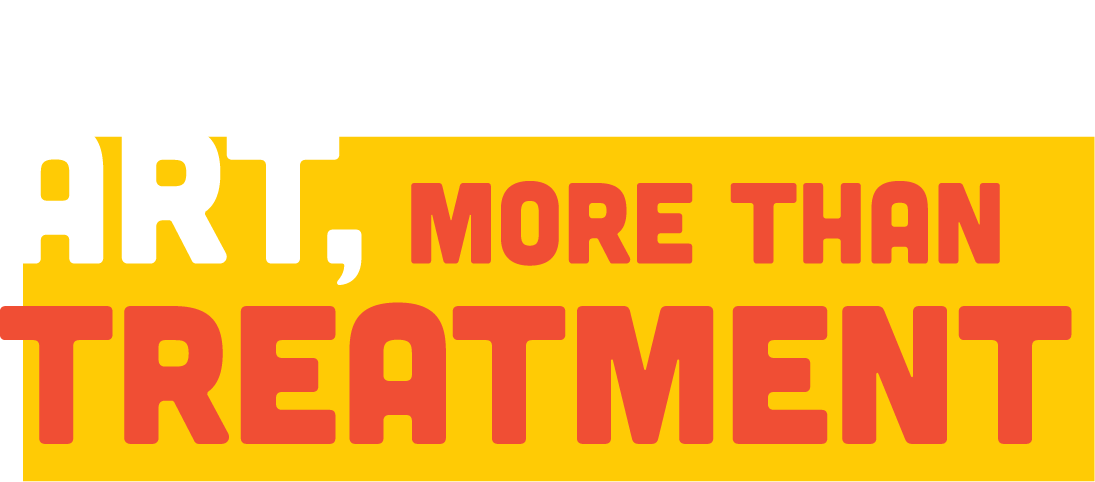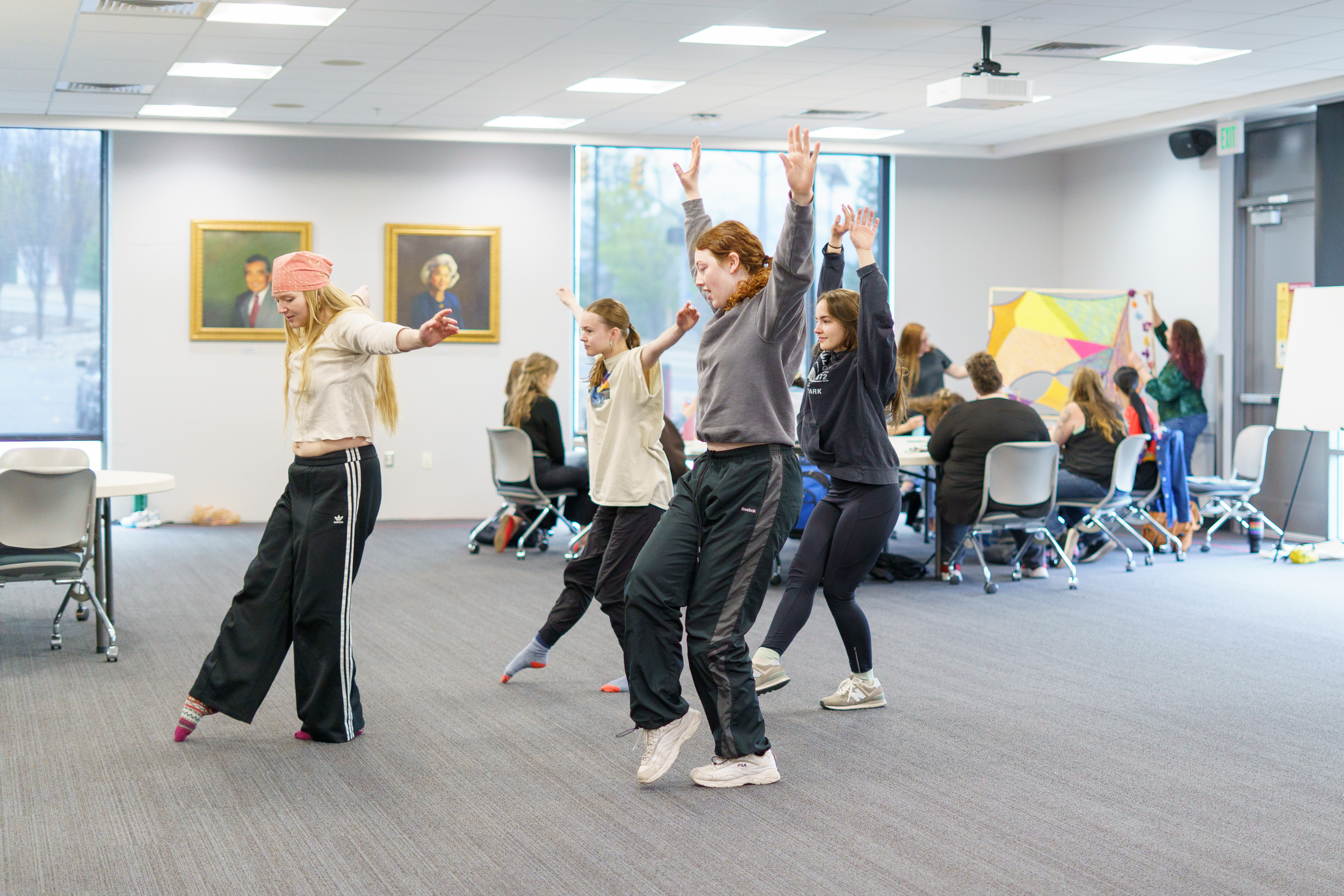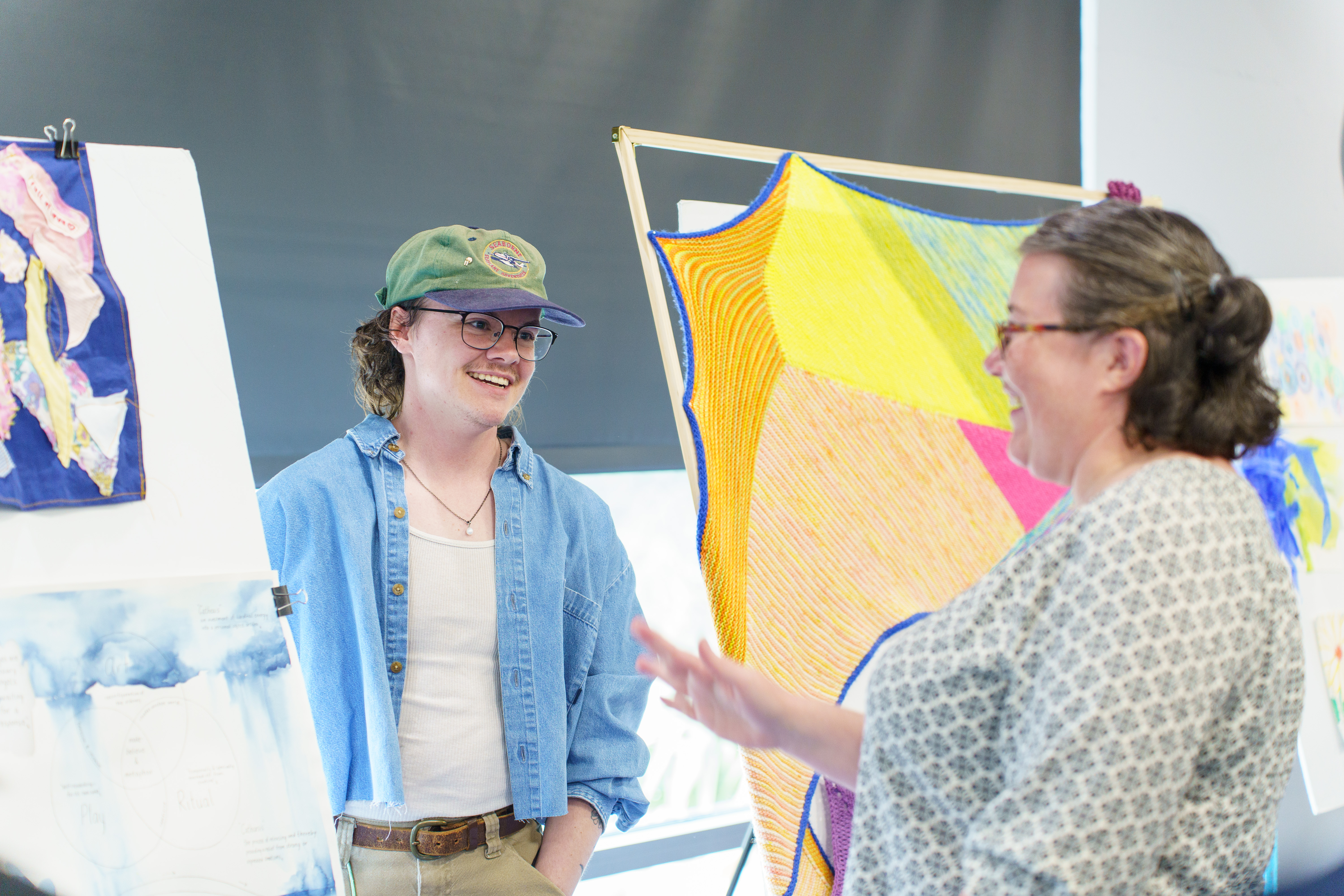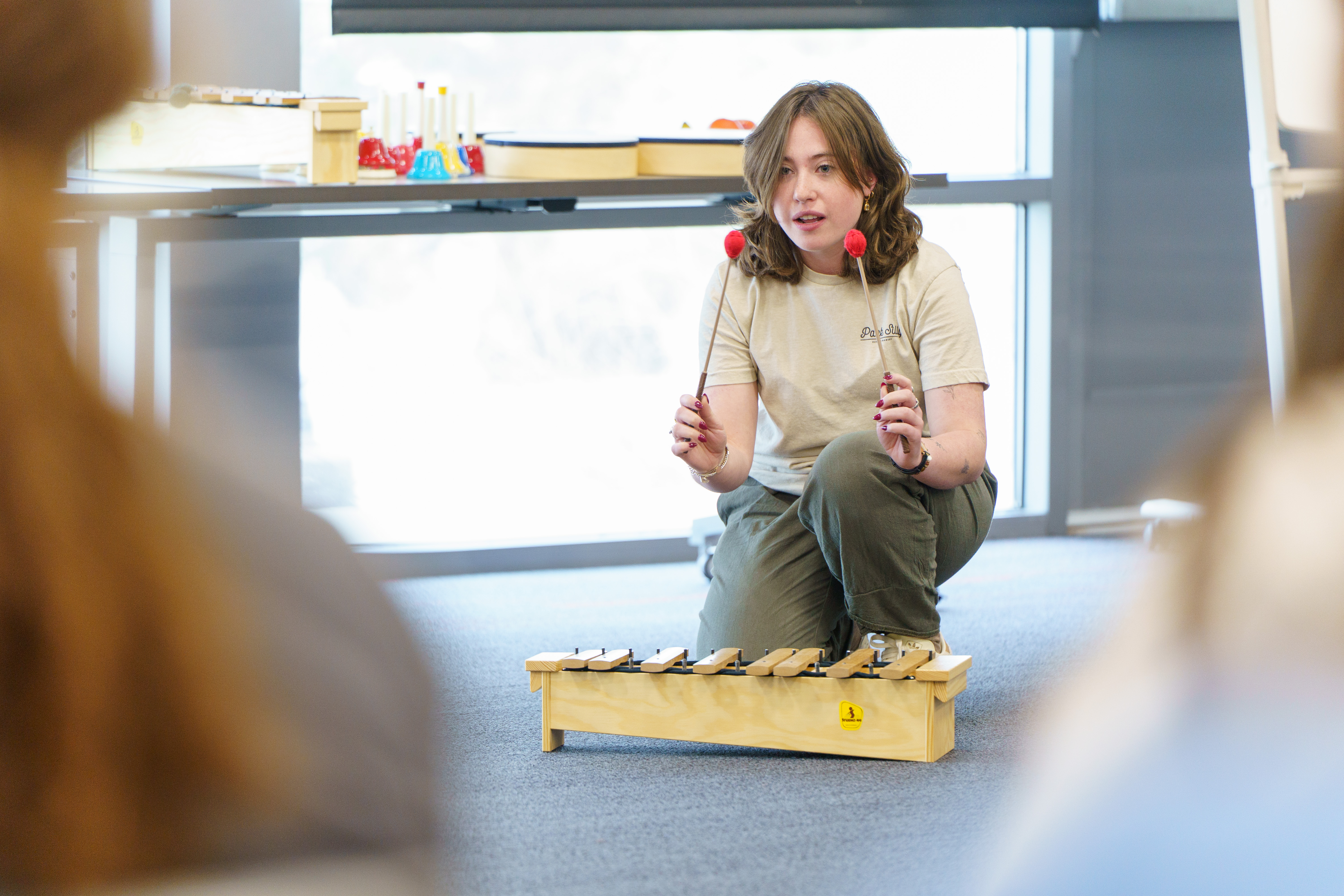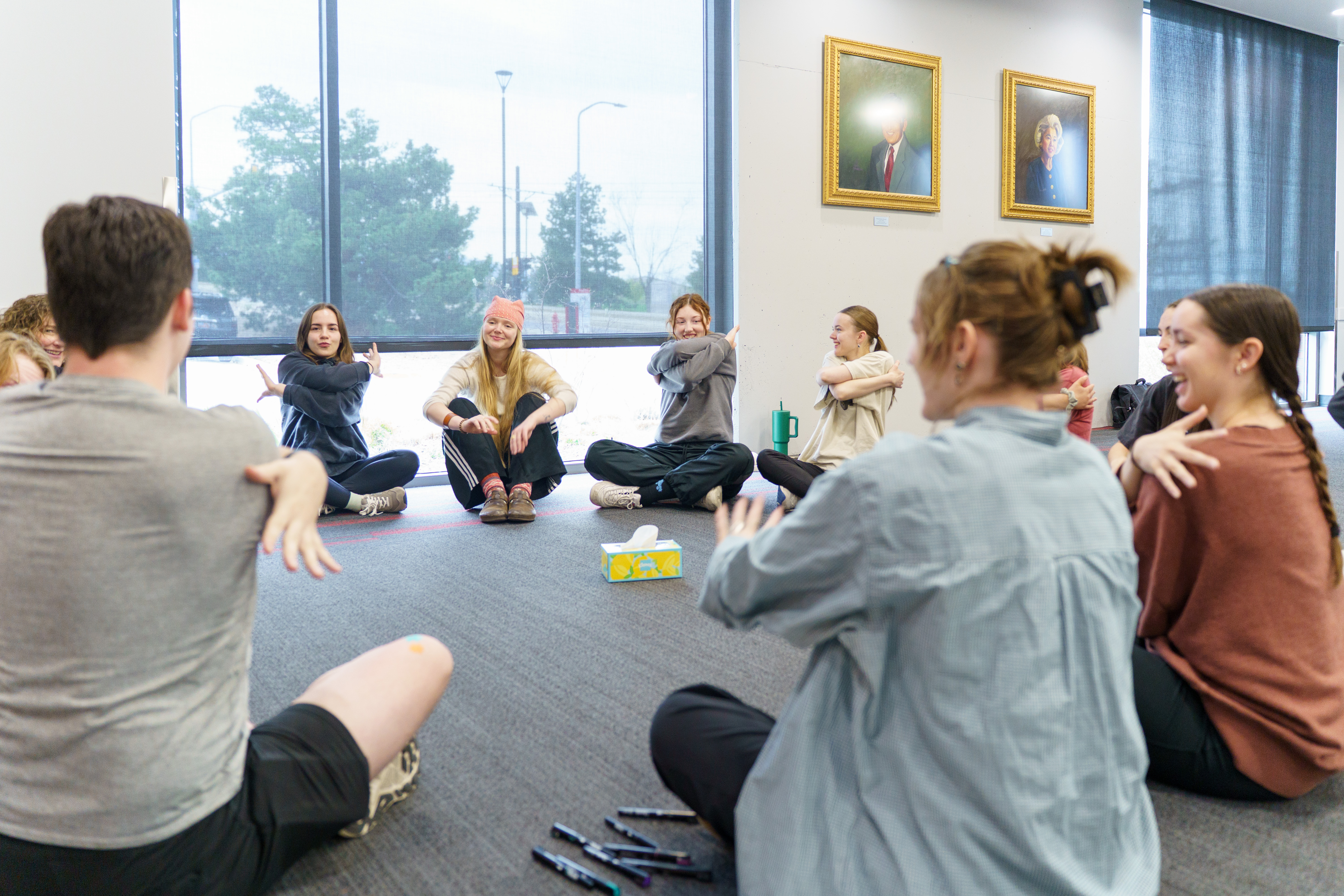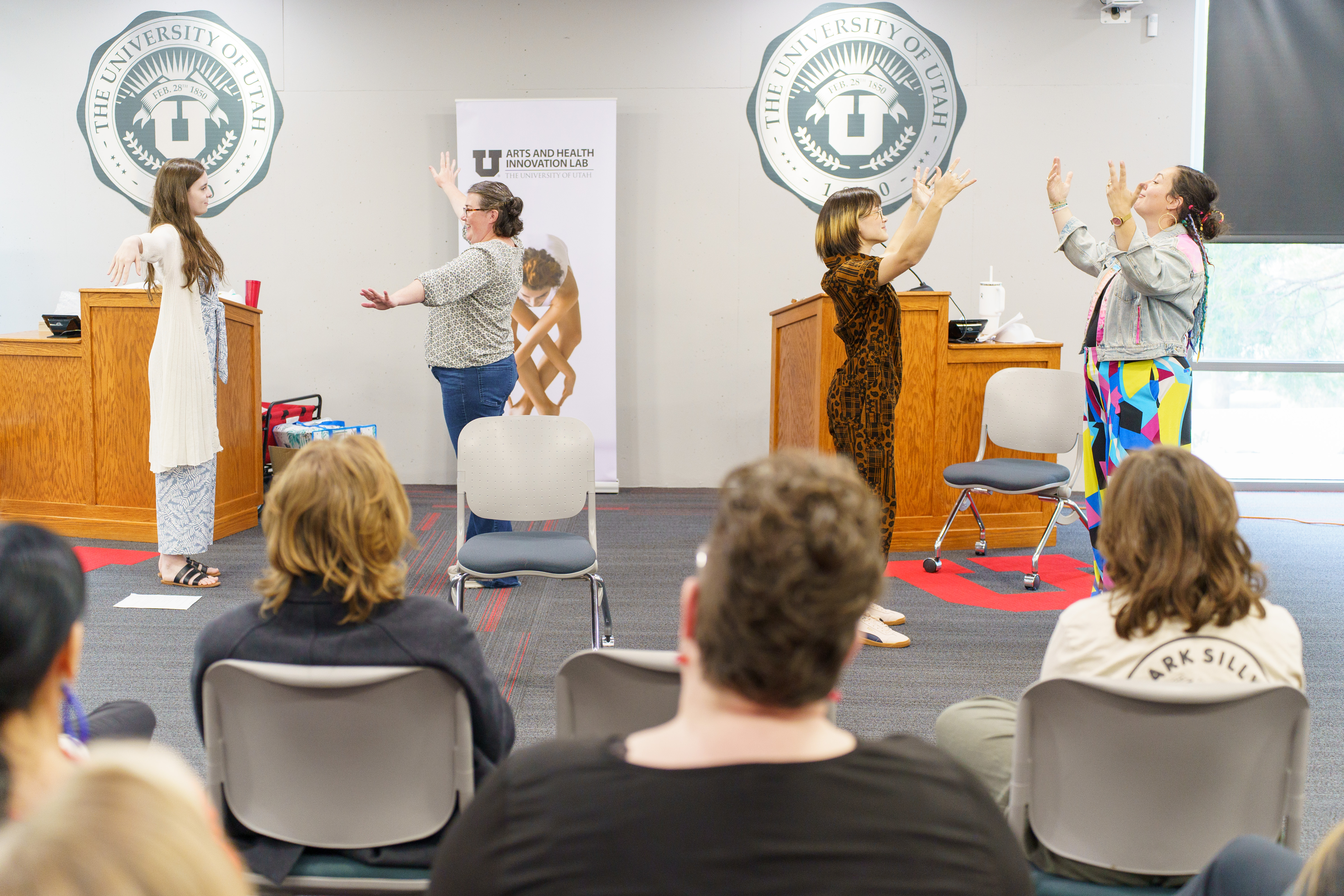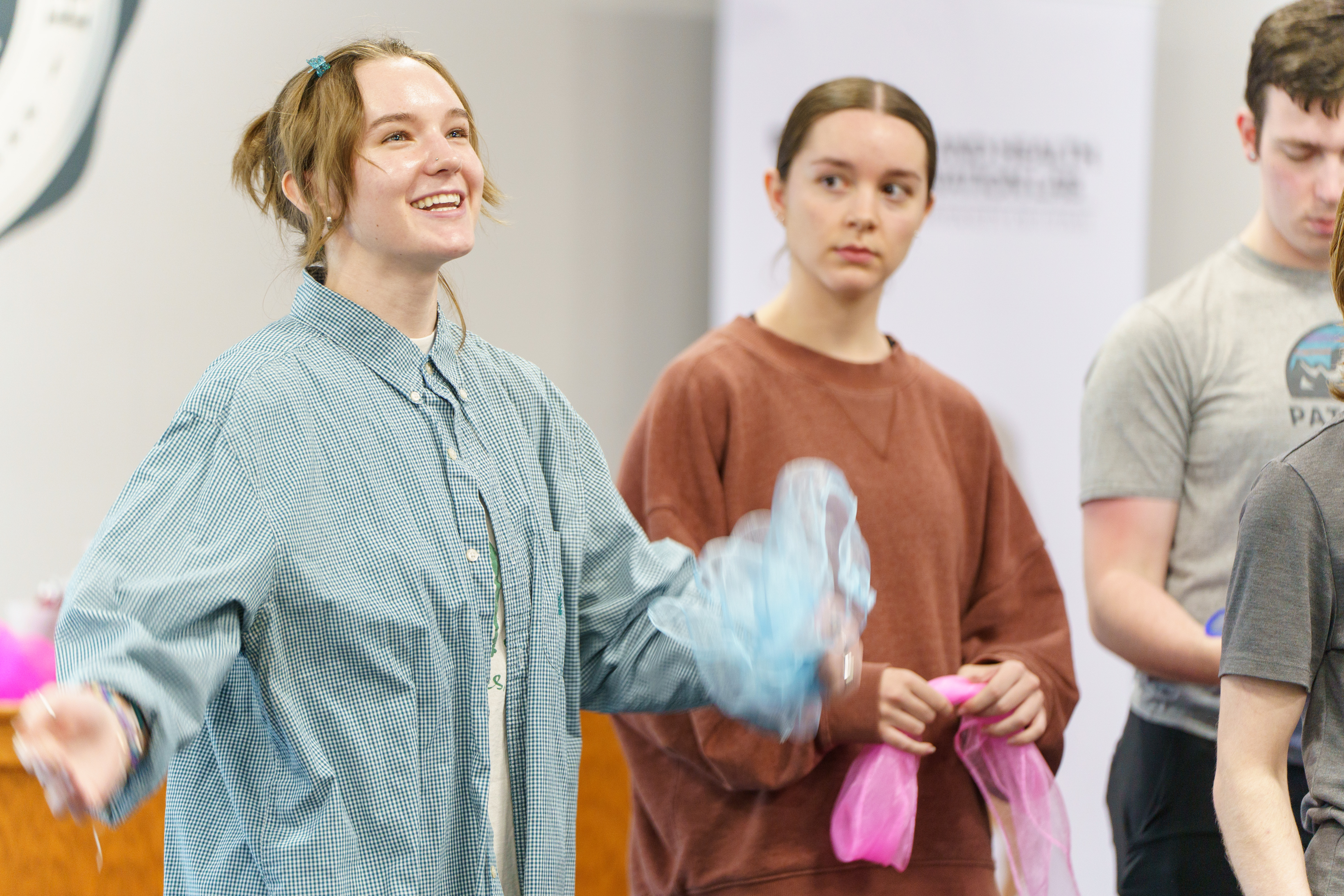All photos: Brandon Cruz
WRITTEN BY EMERI FETZER
Fine Arts students often intrinsically understand the health benefits of their personal practices. Maybe the studio is their first refuge for relaxation, regulation, or release. There, they can freely move their body, pour into a canvas, or play an instrument until an emotion changes. Perhaps this inclination to turn to art for well-being is the very thing that draws them to it.
For those curious about the innate healing power of the creative process, a new opportunity for inquiry — at the intersection of art and health — is now available at the University of Utah.
This spring brought the launch of four introductory courses in the evidence-based field of Creative Arts Therapies (CAT). CAT is the term encompassing healthcare professions that use the creative process of making art to improve the well-being of individuals of all ages and health conditions. Foundational courses in Art Therapy, Dance/Movement Therapy, Drama Therapy, and Music Therapy introduced students to professional clinical training, including the history, theoretical principles, and practices of each profession.
Serving as a pre-requisite for any student wanting to further their study in graduate programs, the courses were taught by seasoned clinicians with notable experience in the field. Combined, the four instructors hold clinical master’s degrees, board certificates, state licenses in mental health counseling and marriage & family counseling, and have served on accreditation boards.
Open to full-time students as well as the larger community, these courses attracted individuals from all points in their education, with a wide range of motivations: from wanting to grow as teachers, challenge themselves as artists, explore interdisciplinary integration, or pursue careers in healthcare.
For Sydney Porter Williams, who received both a BFA in art teaching and MFA in community-based arts education and is now an Adjunct Professor in the Department of Art & Art History, the course was confirmation that art therapy is the next step in her path.
“In our art education program, there is already a strong focus on healing,” she said. “This felt like the missing link between arts ed and therapy and using art for healing. I can now create a bridge and put language to it.”
Several students came to the CAT courses with significant experience in the sciences and medicine. The information they gained both broadened possibilities for research and changed their perspectives on patient care.
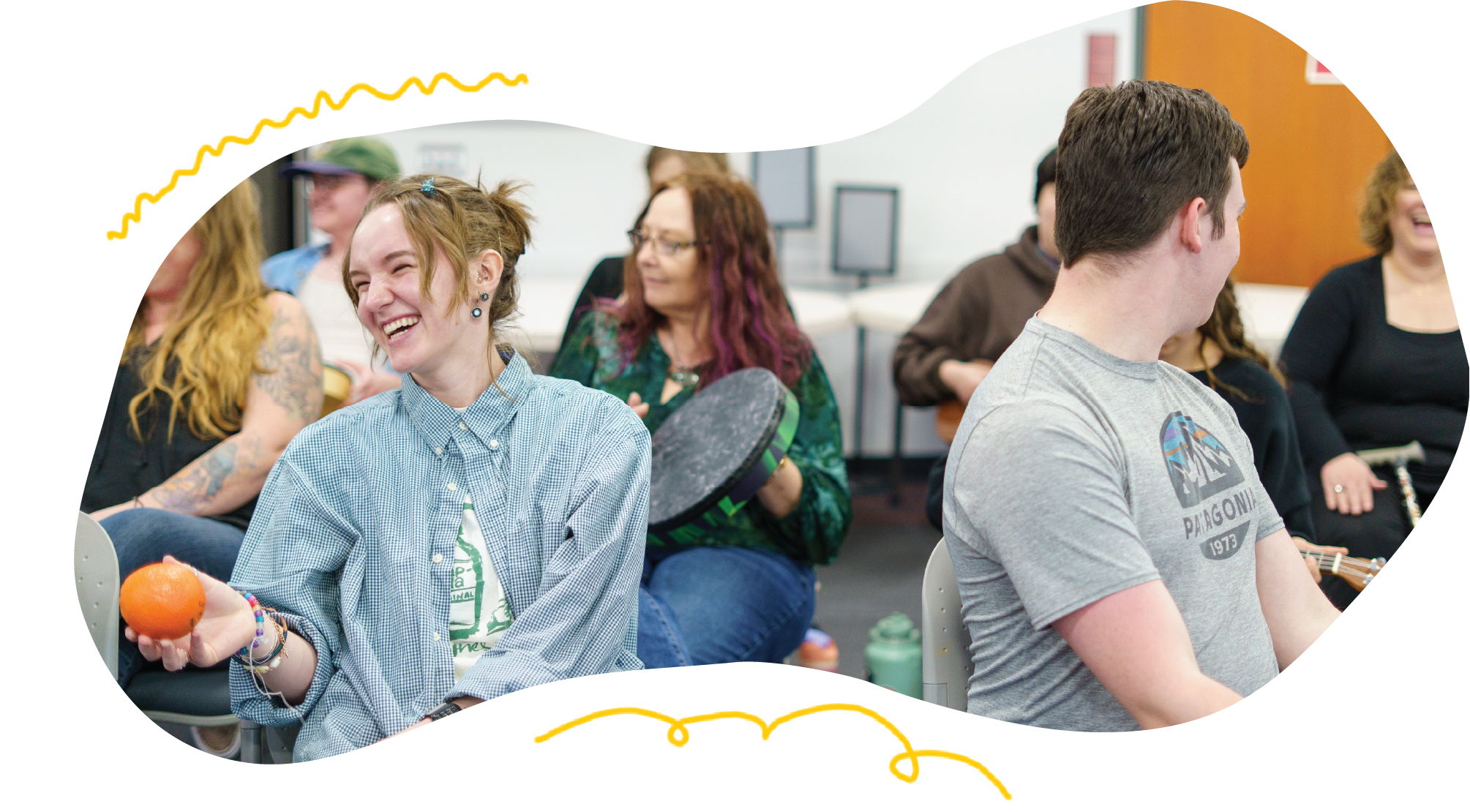
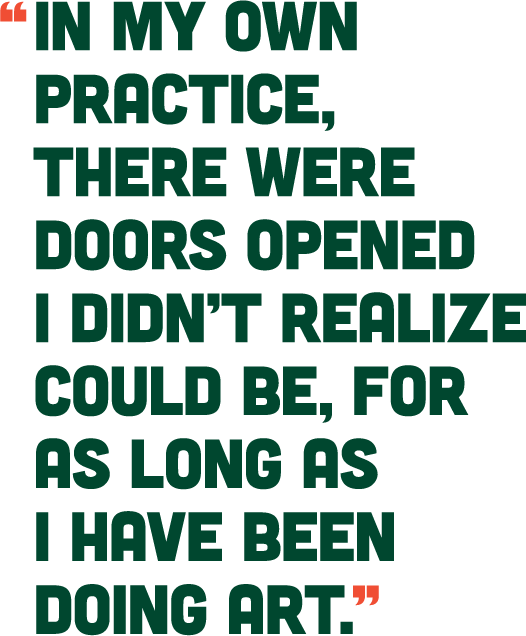
“Something that is really important to me is understanding that medicine is more than the treatment, the medication, the procedure. It’s really about the person,” said Kathryn Boyce, a double major in modern dance and pre-medicine who found a natural marriage of her interests in dance/movement therapy.
“There’s no diagnosis,” she explained. “You’re not interpreting someone’s movement and saying ‘you feel this way.’ You’re just giving someone the space to express what is needed physically and being able to experience the world through their body. The importance of that is sometimes downplayed.”
Deborah Yi-Ning Hsu is a classically trained musician who has previously worked in a pediatric neurology lab. She was interested to discover the overlap between the neurological sciences with music therapy. “I wanted to weave my way in by using my pre-med experience and my empirical scientific side,” she said.
For their final projects, students researched and developed introductory creative arts therapy interventions that could be implemented in clinical practice. Deborah Yi-Ning Hsu explored how auditory rhythmic stimulation could help Parkinsons patients set tempo for their gait, as part of rehabilitation for motor control.
Student Essen Skabelund investigated how to use drama therapy to treat clients with obsessive compulsive disorder, employing playfulness to step outside black and white thinking.
In the Art Therapy course, students Karen Quinn and Matt Brasher addressed grief for geriatric populations, recommending that participants create postcards using imagery and colors their loved one would have enjoyed, and include a note to the deceased person. An opportunity to honor those passed, this process could also allow grievers to express things unsaid.
“In my own practice, there were doors opened I didn’t realize could be, for as long as I have been doing art,” Brasher said. “Being able to work alongside other wonderful people to create meaningful interventions has opened up my heart, doors for connection, and community in a way I didn’t expect.”
Alongside the work to understand how to use art to help others, many students found that they unexpectedly deepened their understanding of themselves.
Max VanNocken-Witmer, who graduated spring 2025 with a BFA in modern dance, found the course to be a reflective conclusion of his time at the U.
“I’ve realized that dance/movement therapy has almost always been a part of who I am,” he said. “Within my own therapy journey, I have often found myself not having words to describe things, telling my therapist, ‘I don’t have words to describe it, but it looks like this inside my body.’ Coming to this class, I realized moving was a very valid form of therapy and release. It’s been so validating. Within my own creative practice, I’ve realized how I can incorporate it, just in how I go through life.”
“One of my favorite things was the opportunity to experience things that had previously only existed in our past, or in our brains, and not to just see them written out on a journal page or as something abstract and hard to grasp but taking up space in the form of real people,” said drama therapy student Kathryn O'Mara.
Regardless of where students’ journeys take them, providing education in creative arts therapies adds not only critical understanding for well-rounded artists, but paves the way for sustainable and compassionate healthcare.
“I'm in awe with the work we have accomplished bringing these introductory courses to our students and community,” said Becky Zarate, College of Fine Arts Associate Dean for Research and Director of the Arts & Health Innovation Lab at the U. “The students learned about the field's broad reach, the high level of research and body of knowledge in CAT, and most of all, about how they can be involved in a field that transforms others’ lives, just as it does for them in their own arts practices."


